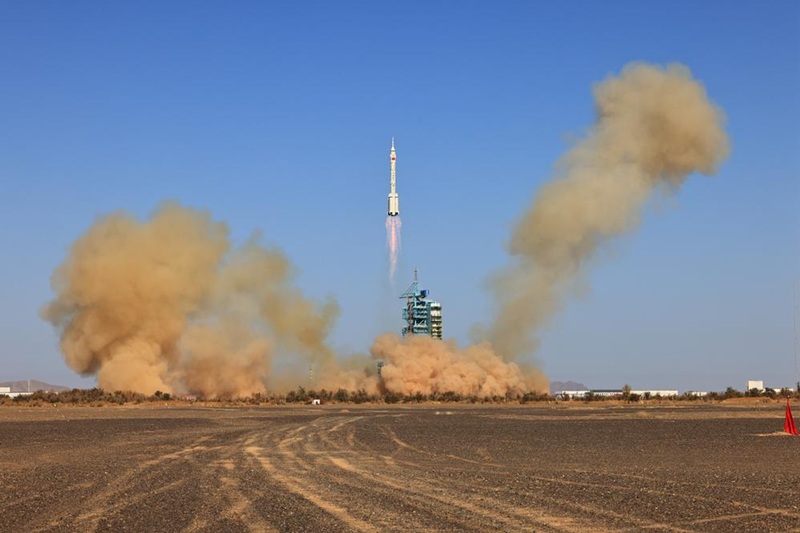E-Town power behind launch of Shenzhou-17
The Long March-2F carrier rocket successfully lifted the Shenzhou-17 manned spacecraft on Oct 26, at 11:14 am.

Launch of the Long March-2F carrier rocket [Photo/beijingetown.com.cn]
The rocket ascended, leaving behind a magnificent trail in the sky, a result of the collective wisdom and efforts of many researchers, including the technical forces from Beijing E-Town Enterprises - Aerospace Long March Launch Vehicle Technology and China Academy of Launch Vehicle Technology.
Beneath the seats of the astronauts lies the main device for recording crucial data during the entire mission of the Shenzhou spacecraft, the Emergency Data Recorder, which plays the role of a black box.
Since the launch of Shenzhou-1 in 1999, every Shenzhou spacecraft has been equipped with a black box developed by Aerospace Long March Launch Vehicle Technology.
Through multiple technological improvements, the black box on Shenzhou-17 has enhanced on-orbit telemetry data transmission capabilities, allowing ground control personnel to promptly monitor the spacecraft's status in orbit and provide safe and reliable services to the astronauts.
During the spacecraft launch, ground control center personnel need to maintain real-time communication with the astronauts while continuously monitoring key parameters such as the astronauts' physiological health data and spacecraft operation attitude. On Shenzhou-17, the data relay device used to perform these complex tasks was developed by Aerospace Long March Launch Vehicle Technology.
"Our digitally controlled telemetry transmission system plays a crucial role in real-time status monitoring, performance assessment, and post-flight data analysis during the rocket's flight process. It is essential for identifying weak points in the rocket and improving its design," mentioned the head of the company.
In many aspects of the rocket launch process, Aerospace Long March Launch Vehicle Technology has left its mark.
It has deployed the BeiDou/GNSS ground control communication equipment for the carrier rocket at the Jiuquan Satellite Launch Center, which is used to complete multiple final inspections after the rocket's arrival and to execute the Long March-2F rocket telemetry signal reception task.
Over 100 types and more than 600 sensors have been paired with the Long March-2F rocket, serving as the "senses" and "nervous system" of the rocket, distributed throughout various critical parts of the rocket, providing clear and accurate monitoring and recording of various systems and components.
Additionally, in the Shenzhou-17 manned spaceflight mission, the ground power equipment provided by the China Academy of Launch Vehicle Technology played a critical role as an energy assurance device.
This batch of products, tailored to the specific requirements of the mission, overcame challenges, achieved technological breakthroughs, and underwent product upgrades.

